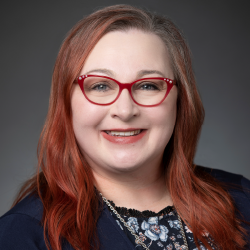The U.S. Department of Education froze student loan payments in March of 2020. During this freeze, federal direct student loans did not accrue interest, and even though many continued to make their loan payments, they were not required. This payment pause ends September 1, 2023, with the first payments becoming due in October.
What is an income-driven repayment plan?
If student loan payments are unaffordable, income-driven repayment plans may decrease required payment amounts. These payments range between 10% and 20% of discretionary income. Prior to the payment pause, one of the most popular income-driven repayment plans, often referred to as IDRs, was REPAYE – the Revised Pay As You Earn Plan. However, the education department retooled the REPAYE plan renamed it the Savings on a Valuable Education (SAVE) Plan. Below, are many of the changes that SAVE brings to borrowers.
Zero-dollar payment
The SAVE Plan increases the limit for a zero-dollar payment from 150% to 225% of the U.S. Department of Health and Human Services Poverty Guidelines for household size. In 2023, Oklahoma households of four with incomes less than $67,500 qualify for a zero-dollar payment under the SAVE Plan. For a single-person household to qualify for a zero-dollar payment, their income must be less than $32,500 in 2023.
Affordable payment
If a household does not qualify for a zero-dollar payment, the SAVE plan may still significantly reduce monthly payments. This is because payments were reduced from 10% of discretionary income to 5% on undergraduate loans. Graduate loans are still assessed at a 10% monthly repayment amount. However, if the loans are a combination of graduate and undergraduate, a weighted average between 5% and 10% of discretionary income will be used to determine the payment amount. Discretionary income is the amount of income above 225% of the poverty guidelines mentioned above.
Accumulating interest
Previously, even with a zero-dollar payment, interest would continue to increase every month. With the SAVE Plan, if the required payment for this income-driven repayment plan is not enough to pay the interest, the remining interest is eliminated.
Capitalization of interest
The final change the SAVE Plan brings is the elimination of capitalizing interest. Before this change, certain borrower actions such as changing their repayment plan could trigger interest capitalization. Interest capitalization is where interest that has not been paid is added to the principal balance, which increases the size of the loan.
Assessment of spousal income
Under the REPAYE plan, spousal income was used to calculate a borrower’s student loan payment amount regardless of tax filing status. With the SAVE Plan, if a borrower files their taxes married filing separately, then only the borrower’s income is used to calculate the payment amount. However, it is a smart idea to check with a tax professional before deciding to change your filing status. Some common credits and deductions may not be allowed when choosing to file separately.
IRS integration
Since income can fluctuate, all income-driven repayment plans prior to these changes required borrowers to recertify their payment plan by verifying income and household size every year. For many enrollees this presented a challenge that could lead to the borrower’s payment being raised to the standard amount. This will no longer be a barrier due to the new IRS integration. The IRS has allowed the U.S. Department of Education access to tax records with the borrower’s consent. This eliminates the need to recertify income every year. Starting in June of 2024, if borrowers have given the education department permission to access their tax information, delinquent borrowers will automatically be enrolled in an IDR plan.
Earlier forgiveness
With the REPAYE Plan, student loan balances owed after 20 to 25 years of making payments through the plan were forgiven. SAVE Plan enrollees with original student loan balances of $12,000 or less will see their loans forgiven after 10 years of payments. The maximum repayment period will increase one year for every $1,000 borrowed.
Example: The loans of someone who borrowed $17,000 would be forgiven after 15 years in repayment under the SAVE Plan.
In addition to earlier forgiveness, many borrowers will receive forgiveness credit for the months spent in some types of deferment and forbearance. If the borrower does not qualify for the credit toward forgiveness, the borrower will be allowed an option to make “catch-up” payments so the payments will qualify.
Timeline and enrollment
Most of the features of the SAVE Plan will be ready in time for student loan payments to resume, but some will not go into effect until June 2024. The features that will be delayed are early forgiveness, lower repayment on undergraduate loans and catch-up payment option. Even without these additional benefits, the SAVE Plan is a great option to help make student loan payments affordable.
The Department of Education is encouraging borrowers to enroll in the income-driven repayment plan of their choice as soon as possible to ensure the application is processed in time for payments to begin. If no IDR choice is made, the borrower will be expected to choose another option. Enrollment can be done by visiting your loan servicer online. If the loan servicer is unknown, this information and much more can be found by logging into www.studentaid.gov.
Article by Tina Herndon, TFCU Financial Educator

About the author
Tina Herndon began her financial career managing three native not-for-profit loan funds and completed a financial counseling session with each loan closing. She served as the Financial Education and Training Manager for the national nonprofit financial counseling and education service, BALANCE, where one of her responsibilities was main presenter. In 2022, she joined the Financial Empowerment team at Tinker Federal Credit Union (TFCU) as a Financial Educator. Learn more about TFCU’s Financial Education team here.
